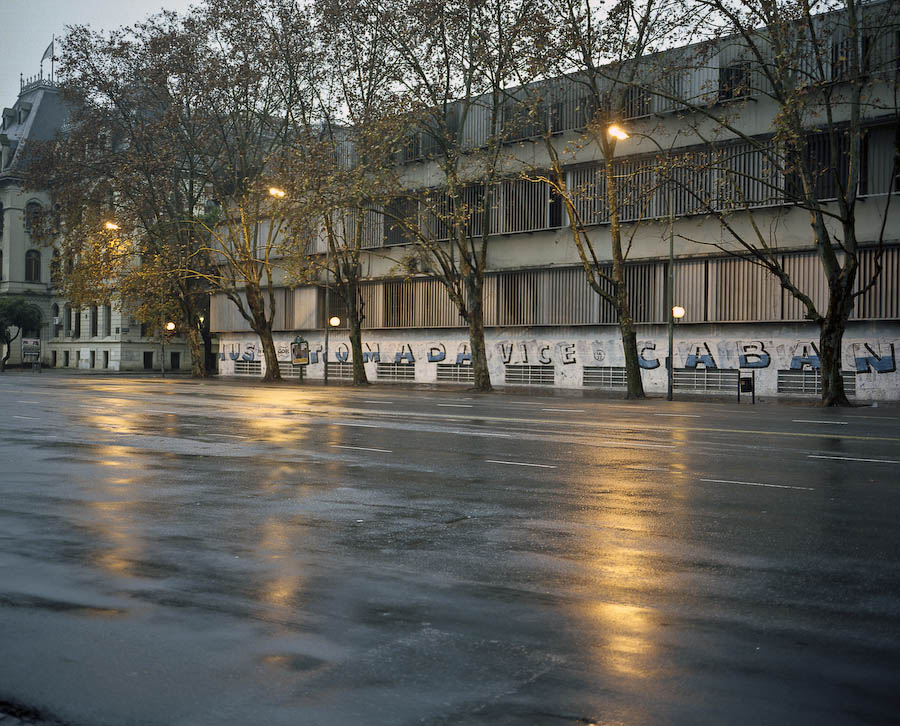
Buenos Aires was founded, twice, on a small bluff not far from where the Paraná and Uruguay rivers enter into a broad estuary called the Rio de la Plata. Hundreds of miles of flat pampas give way, rather undramatically, to a small slope, about 30 feet in height, below which sits the river. After living in Buenos Aires for about two years, the flatness of the city, the impossibility of having a vista or a perspective from which to orient oneself, began to feel oppressive. I started taking pictures around the one, small topographical feature present in the city: the brief slant of the barely perceptible riverbank, or barranca.
Residents of Buenos Aires say the city turns its back on the river. Indeed, centuries of landfill have pushed the present-day edge of the river so far from its original banks that standing at any point on the riverbank, the river itself is never visible. What is visible are the markings of Argentina’s history: the lavish parks built in the 19th century, the seat of government, the bullet-scared façade of a government ministry, the site of a clandestine torture center run during the last military dictatorship, murals for candidates, a monument to a lost war, graffiti for recently a deceased ex-president, an elevated highway constructed for the World Cup and so on.
The photos in this work are ordered by their geographical location, from north to south, starting with the Avenida General Paz, which marks the northern limit of the Federal Capital district of Buenos Aires and then continuing southward until Parque Lezama, in the southern part of the city.
— Thomas Locke Hobbs, Buenos Aires, Argentina